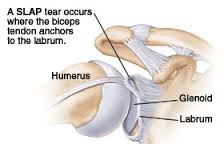Today, Monday, we find Mr. Halberd Hithy after a mountain bike accident. He went over the bars on his Saturday ride and fell awkwardly onto his right shoulder. He got up and finished the ride, however felt extreme pain in that shoulder.
He iced it that night and didn’t use it at all. He had a difficult time sleeping due to sharpness and deep aching in that shoulder.
Sunday he wasn’t able to lift it comfortably, was unable to lift anything of any weight (no more than 2-3 lbs) away from his body, had to keep his arm tucked to his side when opening/closing doors, and had local tenderness and swelling.
My initial thoughts are two fold. If I can eliminate the possibility of a major shoulder injury: labrum tear, shoulder separation, rotator cuff tear, then perhaps we can help the healing process with some GENTLE soft tissue work to aid in circulation, lymphatic flow, and pain reduction. However due to the intensity of the pain and inability to move the arm freely I’m betting this is out of my scope of practice. Some simple tests will let us know.
Visual Assessment:
The right shoulder is elevated with the soft tissues around it appearing in spasm. There is mild swelling and some abrasions where he made contact with the ground. He exhibits obvious apprehension with any humeral movement.
Manual Assessment:
I first want to explain two simple topics about assessing the basic tissues in our body.
1) Contractile Tissues – This essentially is muscles, more specifically skeletal muscles, that have the ability to voluntarily contract.
2) Inert tissues – These encompass all connective and other tissues in the body that do not have the ability to contract voluntarily.
When doing assessments we can help isolate trauma to the different tissues with three easy concepts.
Active Range of Motion (AROM) – The client moves their body without the help of the therapist. This engages both contractile and inert tissues. Pain with AROM indicates there is damage to the tissues involved in that motion. It does not discern between contractile/inert as both are involved in the action.
Passive Range of Motion (PROM) – The therapist moves the clients body without them helping. This means the contractile tissues are not involved and the stress in placed primarily on the inert tissues. Generally (there is always exceptions and false positives) this indicates damage to an inert tissue such as ligament, cartilage, or joint capsule.
Manual Resistance Test – This involves both therapist and client. The client presses into the therapists resistance, gently at first, and therapist doesn’t allow movement creating an isometric contraction. Because the joint is not moving during this action we shouldn’t see stress placed onto the inert tissues. If pain is elicited then we can expect to find damage to the contractile tissue.
AC Tear Assessment: First we will do some gentle ligament tests.
Note: There are many ways to assess the shoulder. As massage therapists you need to make sure you begin conservatively as our basic training does not cover in depth assessment of ligamentous structures.
Crossover test: This will indicate damage to the AC joint with pain local to that tissue.

I start here simply due to the nature of the fall and that it’s a common mountain biking pathology. I don’t want to irritate the structures any further if possible so I begin with the most likely issue in search of a positive pain response on the first try.
This test creates an intense local pain with visual shifting in the AC joint region. This indicates a shoulder separation and means my assessment is done and will refer him out to an orthopedic physician or physical therapist for further care. I recommend as the joint begins to heal to return for some soft tissue balancing work to ensure a complete and functional recovery.
The following are other test I would have performed had this not been such as obvious positive finding.

Labrum Team: Because the biceps tendon inserts into the labrum – often times sudden overloading can create a tear in this ring of connective tissue. This test places the biceps tissue/tendon in a lengthened state and with activation loads the attachment at the labrum and superior glenoid tubercle.
Rotator Cuff: Utilizing manual resistance tests for the 3 main actions of the rotator cuff, these being internal rotation, external rotation, and abduction, would indicate if any tears were present. Resisting the client as they go through these actions would incriminate the muscle being placed under stress.
Shoulder pathologies and trauma are common in people who live active lifestyles. Although massage therapy is essential to maintain a healthy and balanced shoulder, it is only appropriate when the inert tissues of the shoulder are in an adequate state of health. Ensuring that we don’t create further damage is a cornerstone to all health practices. Because of this, having a basic understanding of assessment is essential to any hands on therapist.


0 Comments